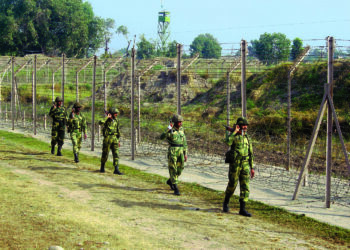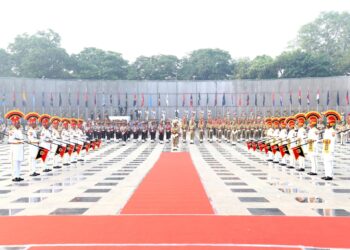Home Minister Amit Shah, recently announced that a Model Prison Act would be introduced in the next six months. The contemporary prison administration in India is a legacy of colonial rule. The Prison Act of 1894, focused primarily on the enforcement of discipline with no regard to the reformation and rehabilitation of offenders.
There have been significant changes not only in the socio-political scenario but also developments in the areas of Penology and Criminology which have led to a re-examination of Prison Administration. Crime has become an important and urgent social issue and a new approach has emerged regarding the objectives for the treatment and punishment of offenders. Progressive legislation based on the correctional and rehabilitation philosophy is much needed.
Prison is a state subject under List- II of the VIIth schedule in the Indian Constitution. The management and administration of prisons fall exclusively in the domain of the state governments. The enactment of a new Prisons Act, as was recommended by The All India Committee on Jail Reforms (1980-1983), as a necessity. The National Human Rights Commission had circulated “An Outline of the Indian Prison Bill -1996” among all the States/Union Territories, but there was no further progress. Some states like West Bengal in 1992, replaced the old Act, Delhi in 2000 and Kerala had a new Prison Act in 2014. The exercise of making a new Prisons and Correctional Services Act was also undertaken in Punjab in 2010, and 2014. The author headed the Committee and the draft prepared with wide consultations was submitted to the state government, but after initial enthusiasm, no action followed. Political will and executive motivation are required to bring the much-needed structural changes, else apathy makes the drafting of the law a futile exercise.
Over the past century, there have been a number of Committees, and working groups delving into prison reforms and making recommendations. The changes in Prison administration have however been slow, staggered, and somewhat disappointing. The recommendations of Dr. W.C. Reckless, a UN expert on corrections, who was invited in 1951 to suggest policy reforms led to the revision of outdated jail manuals for the first time in 1960. The Model Prison manuals of 2003 and 2016, were made following the direction of the Apex Court. So far, only 11 states and Union Territories have adopted the 2016 Manual. Since the Prison Act remains unchanged, and the Manual derives its existence from the Prisons Act, a total overhaul of the system has not taken place.
The Indian Judiciary has played a key role in bringing prison reforms by giving various directions to prison administration in consonance with the human rights framework provided by the Constitution of India and the International Covenant on Civil and Political rights, 1966 to which India is a party. Prisoners’ rights jurisprudence has been expanded through a series of judgments over the years.
The whole point of the Model Act is that it is a legislative approach to reform. Prison legislation should reflect international minimum standards and universally acknowledged best practices, as exemplified by the Nelson Mandela Rules 2015 and related instruments, as also the decisions of the Supreme Court pertaining to the Prison Administration. New legislation over the years, like the Mental Health Act of 2017, the Protection of Human Rights Act, of 1993 that provide for the protection of human rights will also have to be taken into consideration.
Prison legislation is normally introduced by a statement of principles. This is useful, as it may anchor the legislation in a wider international or human rights tradition, or it may refer back to the fundamental rights recognized by the constitution. It is useful for the interpretation of subsequent provisions of the legislation.
The Model Act should cover all the relevant issues governing the management and administration of prisons, taking into account the challenges it faces due to the changed nature of crime and criminals. Custody, care, and treatment are the three main functions of a modern prison organization. The aspects related to custody under conditions of human dignity should have provisions related to not just accommodation, food, and health care, but also access to legal aid, complaints and requests, contact with community and family, and work. A very important part of the new act should be on the scientific classification of prisoners, and individual sentencing planning, which is the first step for correctional interventions. In the draft of the Punjab Act, a classification and assessment committee also had experts in behavioral sciences associated with the work and classifying inmates based on various risks and needs. The chapter on the rights and duties of prisoners was an important part of the draft act for Punjab. The provisions on inspections and monitoring are important for a closed institution.
Different countries have used different drafting techniques and approaches, and it’s insightful how good practices and trends can be applied in national legislation. Model Prison Act should also consistently reflect the requirement of meeting the distinct needs of women prisoners and institutionalizing gender-responsive prison management more broadly based on the Bangkok Rules 2010. The old Act had no provisions related to the vulnerable category of prisoners like the mentally ill, transgenders, or foreign prisoners. The increasing number of foreign nationals held in prisons requires specific provisions to be made for them in prison legislation.
Overcrowding is a key concern in the Indian prison system. Solutions to overcrowding need to be explored and implemented. The maximum intake capacity of each jail should be fixed, and if it exceeds that, there should be a “bursting procedure,” spelling out what mechanisms are available to deal with having more prisoners in the system than it can accommodate. This is there in Malawi legislation which allows the officer in charge of the prison and also the head of the prison service to take action when the system is overcrowded. Such a procedure is of particular importance when there are pandemic diseases, such as COVID. The commentary on the European Prison Rules offers useful guidance on the subject of overcrowding.
Every prisoner thinks about the day of release from the moment of incarceration. The Prison regime is about preparing the prisoner for that day of release. These provisions will have to be an important part of the Model Act. It is equally important to have well-professional staff while clearly specifying their duties, the remuneration and working conditions should reflect the challenging nature of prison work.
The process of drafting the law is important, and wide consultations with stakeholders, including prisoners and prison staff of all ranks, and experts will help make a law that will serve to reform and reintegrate prisoners back into society as law-abiding citizens.
Incarceration as the punishment of the first resort can be especially counterproductive for people convicted of lower-level crimes. A relook at penal practices is required. While enacting laws is one aspect, implementing requires resources both human and financial, as also that people believe in the purpose of the law.










